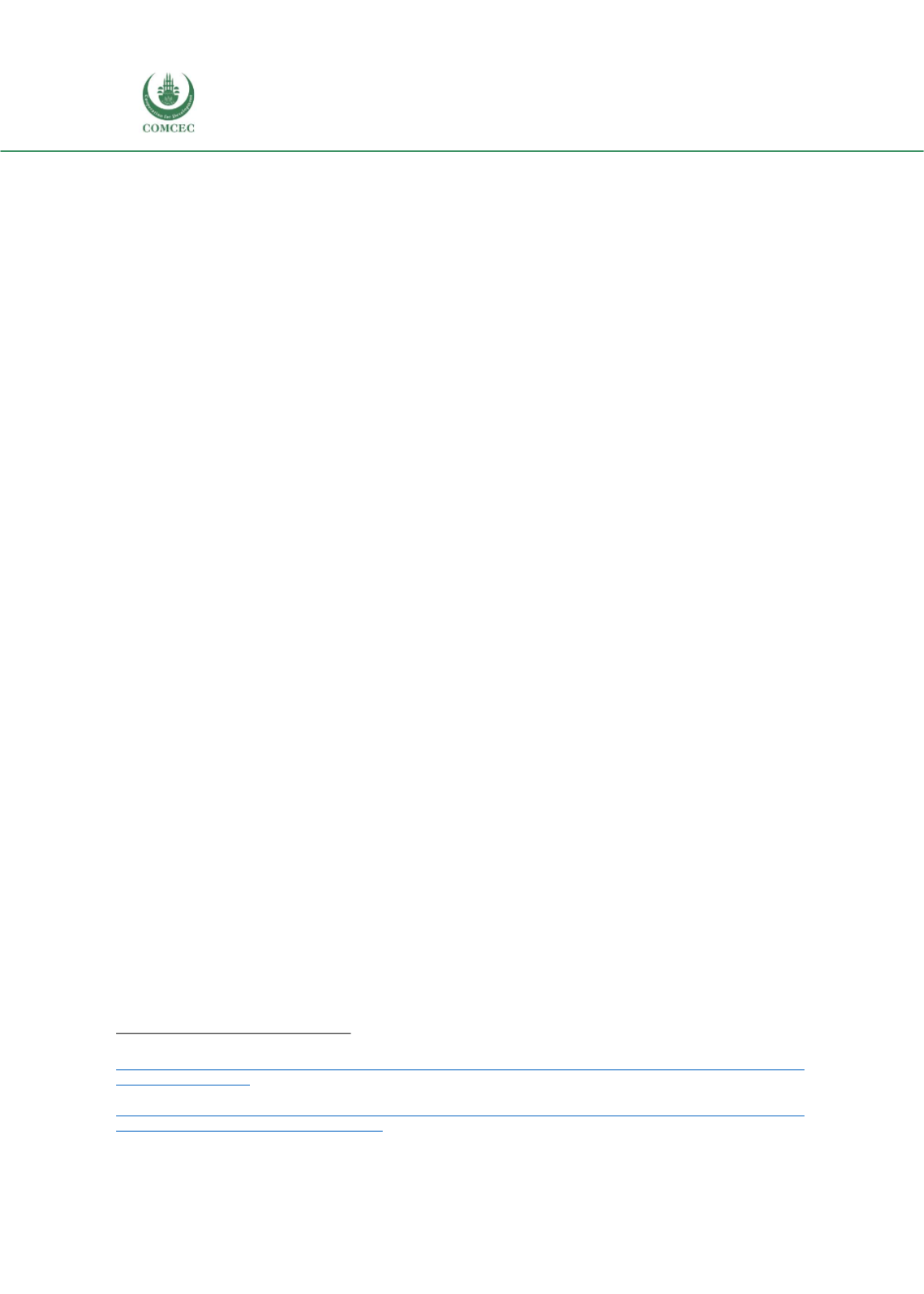

Analysis of Agri-Food Trade Structures
To Promote Agri-Food Trade Networks
In the Islamic Countries
76
limited product coverage of the control list containing import prohibitions and restrictions in
force. The new Import Policy Order (2015-2018) also has similar objectives and adds the aim of
making a strong base for indigenous exports by facilitating backward linkages for export-
oriented local industries. To achieve development of targeted export sectors, Bangladesh uses
high tariffs on frozen shrimp and fish, and on jute, despite the fact that they are major exports.
Tariffs are also high on some import substitution crops, for example vegetables, fruits, nuts and
spices.
29
Over the last decade, Bangladesh’s export policies have emphasized the need to diversify the
export base, stimulate higher value-added exports, improve the quality of exports, develop
backward-linkage industries, and undertake vigorous marketing efforts, which also reflected the
ongoing Export Policy (2015-2018). A key component of the Export Policy (2015-2018) has
been the use of various types of assistance for domestic production and exports (export-
oriented firms, ‘deemed exporters’), which varies by type of activity to, inter alia, encourage use
of domestic technology, import substitution, adjustment and/or boost export performance, as
well as to offset the adverse effects of tariffs and other border taxes. Such assistance is available
in the form of tax and non-tax incentives. The former includes indirect tax measures, such as
concessionary duty rates on imports of capital machinery and spare parts, duty drawback for
exports, special bonded warehouses for inputs used in the manufacture of finished products,
and Value Added Tax (VAT) rebates on certain export-related services; and direct tax measures,
like rebates on taxable income generated from any export business or exemption from income
tax. Other forms of support consist of cash grants for exports, accelerated depreciation, and
various types of loans at concessional interest rates (for exports, agricultural production, small
and cottage industries) determined by the Bangladesh Bank. Export prohibitions are maintained
mainly for reasons of health, ecological balance, security, archaeological value, or maintenance
of adequate domestic supply. Export permits or authorizations are required only for a few
items.
30
Main Barriers and Potential Drivers: Stakeholders’ Views
This section summarizes the findings from stakeholder consultations through semi-structured
interviews on the main obstacles that inhibit further exploitation of Bangladesh’s agricultural
trade potential, and possible drivers that could stimulate the country’s exports and imports of
agricultural products with the rest of the world in general, and with OIC members in particular.
Major Barriers Affecting Agricultural Trade
Government Policies Affecting Agricultural Trade
Stakeholders largely agreed that Bangladesh’s trade policy and regulatory regime related to
agricultural trade, production, the processing industry, as well as other sectoral policies, are
generally focused on protection and promotion of domestic production, related industries and
exports thereof, ensuring the county’s food security and safeguarding against hazards to public
29
Ministry of Commerce, Government of Bangladesh (2015), Bangladesh import policy order 2015-18, available at:
http://mincom.portal.gov.bd/sites/default/files/files/mincom.portal.gov.bd/page/e177ee18_f389_4f9e_a40c_57435cfac5b 2/Import%20Policy.pdf [accessed on 2 April 2018]
30
Ministry of Commerce, Government of Bangladesh (2015), Bangladesh export policy 2015-18, available at:
http://mincom.portal.gov.bd/sites/default/files/files/mincom.portal.gov.bd/page/e177ee18_f389_4f9e_a40c_57435cfac5b 2/Export%20Policy%202015-2018_English.pdf[accessed on 2 April 2018]
















